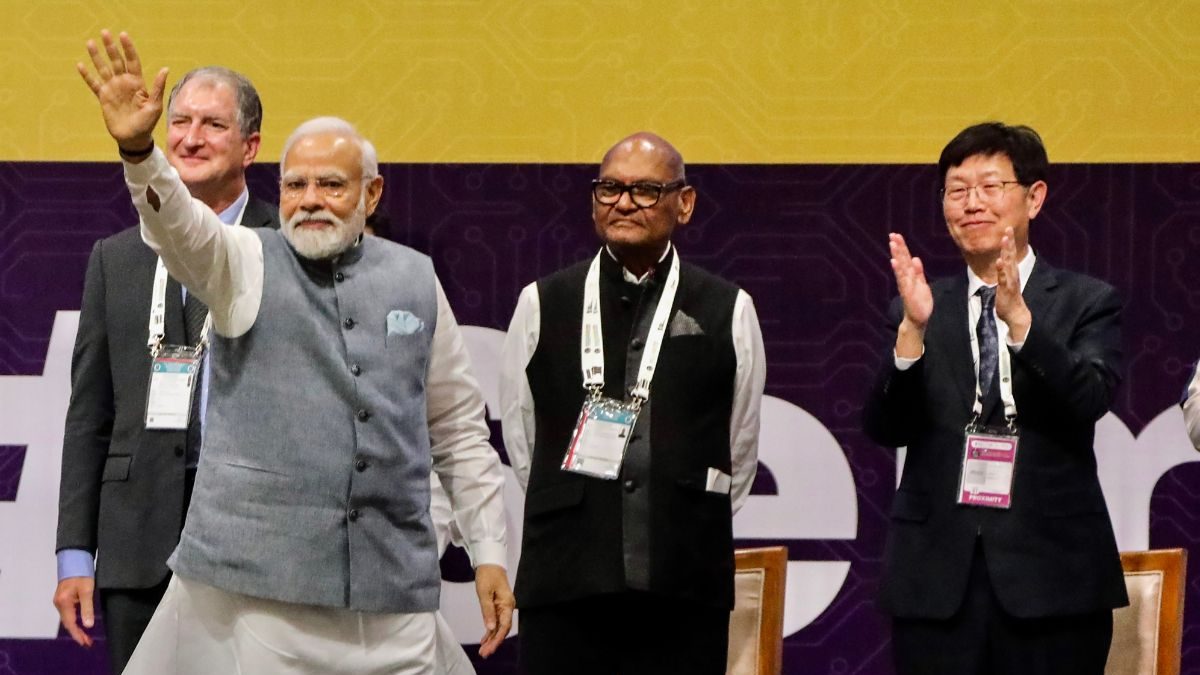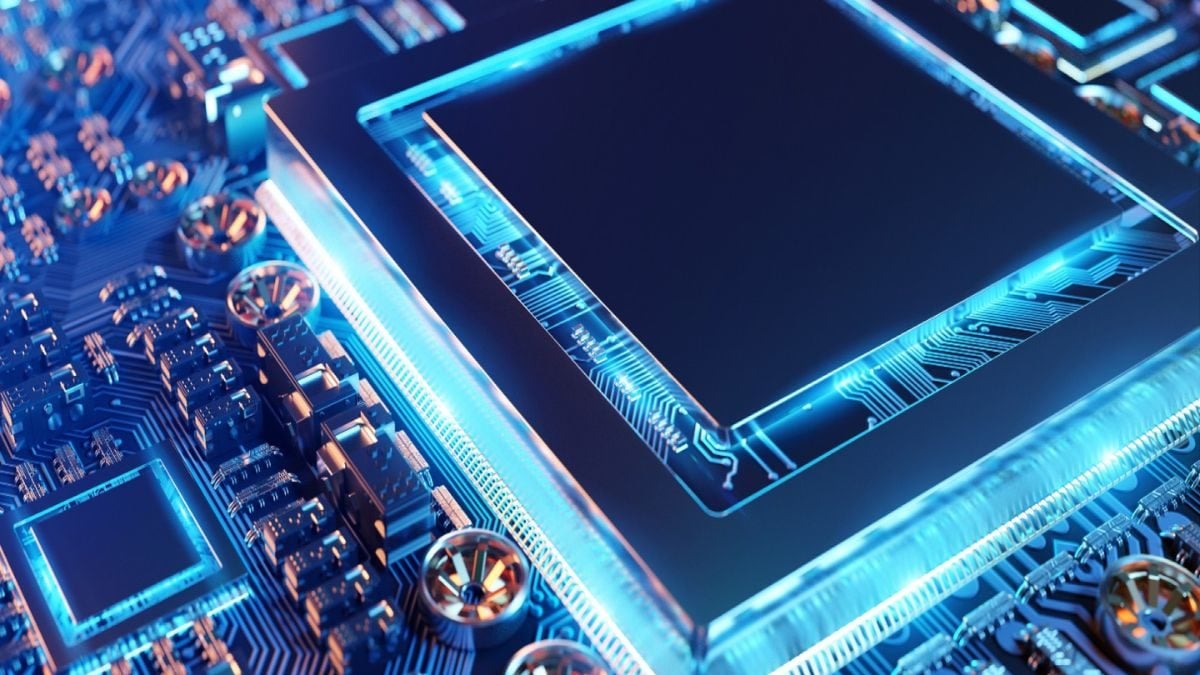[ad_1]

Prime Minister Narendra Modi during the Semicon India Conference 2023, in Gandhinagar. Foxconn Chairman Young Liu is also seen. (PTI)
The presence of major chipmakers at the conference indicates that India is becoming an attractive destination for semiconductor companies. It shows that the Indian government’s efforts to promote the semiconductor industry and create a conducive business environment are gaining traction
India is rolling out the red carpet for the semiconductor industry, Prime Minister Narendra Modi said on Friday as he inaugurated the 2023 edition of the Semicon India conference at Mahatma Mandir in Gujarat’s Gandhinagar.
“During the first edition of this summit, the discussion was about why companies should invest in the semiconductor sector in India but now the question has changed — why not to invest,” PM Modi said. He added: “India knows that semiconductor is not only about our need, but the world also needs a trusted and reliable supply chain supplier and who will be a better partner than the biggest democracy in the world.”
During the inauguration ceremony, Union minister for electronics and IT Ashwini Vaishnaw as well as minister of state Rajeev Chandrasekhar and Gujarat Chief Minister Bhupendra Patel were present along with the executives from major companies such as SEMI, AMD, Applied Materials, Cadence, Vedanta Group, Micron Technology and Foxconn.
The participation of top chipmakers such as Foxconn, AMD and Micron in the Semicon India conference can have significant implications for India amid the dominance of Taiwan and China’s efforts in the semiconductor sector.
The Impact
The presence of these major chipmakers at the conference indicates that India is becoming an attractive destination for semiconductor companies. It shows that the Indian government’s efforts to promote the semiconductor industry and create a conducive business environment are gaining traction. This could potentially attract further investments and collaborations, bringing in advanced technologies and expertise to bolster India’s semiconductor capabilities.
Taiwan is home to TSMC, the world’s largest contract chipmaker, and China is investing heavily in the semiconductor industry. However, geopolitical tensions or supply chain disruptions in these regions could impact the availability of semiconductor components for the rest of the world. India’s efforts to build its semiconductor industry and attract major players can help reduce its dependence on these regions, ensuring a more diverse and resilient supply chain.
India has been striving to enhance its domestic semiconductor manufacturing capabilities to support its electronics and technology sectors. The participation of these chipmakers can lead to the establishment of semiconductor fabrication facilities in India or increased collaboration with local manufacturers. This would not only strengthen India’s position in the semiconductor market but also create job opportunities and contribute to the country’s economic growth.
Industry experts strongly believe that collaboration with established chipmakers can accelerate technological advancements in India. By gaining access to cutting-edge technologies, research, and development, India can improve its semiconductor ecosystem and become more competitive in the global market. This could pave the way for the development of innovative products and solutions in various industries.
The conference can serve as a platform for knowledge sharing and collaboration. It may facilitate partnerships between Indian research institutions and these chipmakers, leading to joint R&D initiatives and technology transfer. This exchange of knowledge can be instrumental in strengthening India’s semiconductor industry and fostering a culture of innovation.
Overall, the participation of major chipmakers at the Semicon India conference represents a positive development for India’s semiconductor sector. It indicates a growing interest in India as a potential hub for semiconductor manufacturing, research, and development.
Where Are We Now?
The US and Japan have already signed a memorandum of communication with India for developing a semiconductor ecosystem in the country. Micron Technology, Applied Materials and Lam Research have already announced their plans to boost the ecosystem.
Vedanta and Foxconn may have ended their pact, but Vedanta is committed to proceeding with setting up its unit in India, while Foxconn is reportedly in talks with TSMC and Japan’s TMH Group for technology and joint venture partnerships to start a semiconductor fabrication unit in India.
Even though there is no confirmation about Vedanta and Foxconn projects, Micron Technology is set to lead the way as it has already confirmed to build semiconductor assembly and test facility for memory chips in Gujarat.
[ad_2]
Source link





